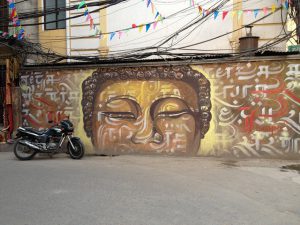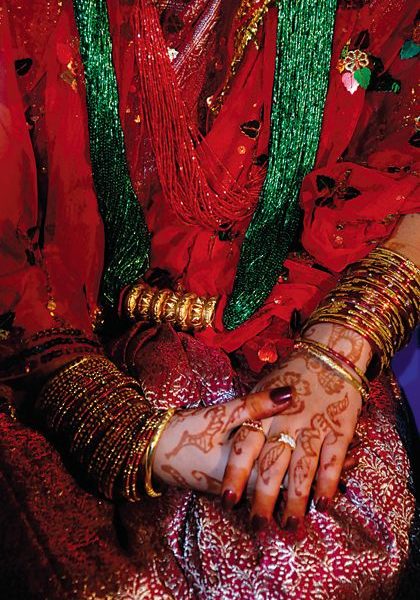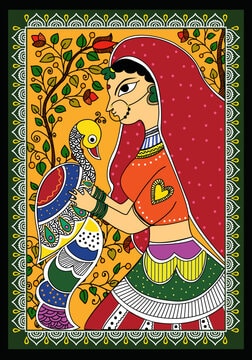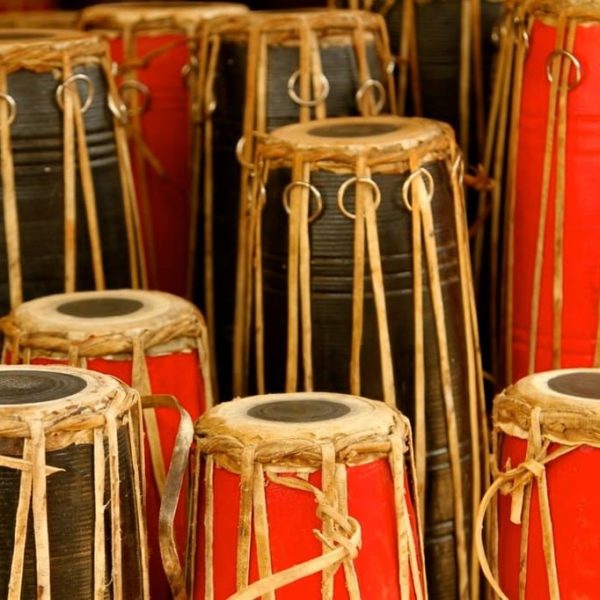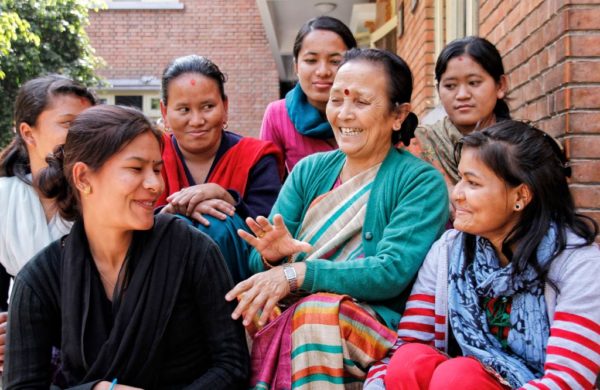Art
The art and culture of Nepal have been strongly influenced by the religious beliefs of the country. The artwork is decorative, delicate, and very beautiful. Nepal art is strongly influenced by the culture of the people and the two really go together and are interwoven. The two most typical forms of art are paintings and sculptures. Nepal’s art and culture have changed little over the centuries through western influences are slowly starting to affect some modern artists.
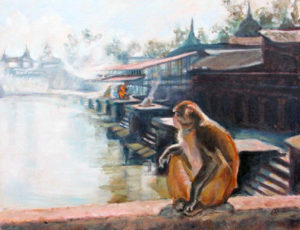 Painting
Painting
The earliest examples of Nepalese art in painting form is that of manuscript illustrations found on palm leaves. This tradition goes far back into the past and the earliest known illustrated manuscript is the Astasahasrika Prajnaparamita of 1015 AD. Often the wooden covers which were created to protect the manuscript-painted leaves are more lavishly decorated than the actual manuscript. Many examples of this type of art have survived and are well preserved. The influence that religion has on such artwork is evident in the fact that such manuscripts are usually only decorated with figures Nepal Painting of divinities. All the manuscripts are illustrated with images of gods and goddesses, regardless of whether they are Buddhist or Hindu in origin. Oftentimes certain manuscripts – along with the relevant imagery – would be copied and donated to a monk, priest, monastery, or temple. Thus the style of painting remained fairly constant and painting quality was maintained for a long period of time. The quality of paper manuscripts also declined. Due to this, older paintings are now held in higher regard than more modern manuscripts of lower quality.
Another form of painting that is evident in Nepal since ancient times is the Thangka Paintings. These were primarily religious in nature and were used as icons in worship. These paintings are known as Paubha in Newari and Thangka in Tibetan and originated in Nepal. The creation of illuminated wall paintings or religious metal sculptures was in big demand at one stage and this spawned an ‘industry’ of skilled artisans who catered to the demand by initiating the painting of such icons on cloth which could be rolled up and easily transported. These thangka paintings were widely received with praise and thus made their way into homes and monasteries in the ninth century and are still popular today. A good example of a thangka painting is the ‘Mandala of Vishnu’ which dates back to 1420 AD. Early thangkas are simple in design and consist of a centrally positioned large deity surrounded by smaller figures of lesser importance. From the 15th century, the Tantric cult started to take hold of the people of the land. Artists started to use brighter colors and there was a tendency towards the portrayal of Shiva and Shakti in various conventional poses. Because of the esoteric nature of Tantrism, a strong emphasis was put on the female element and sexuality during this time. The thangkas produced were said to possess magic forces and a great variety of symbols were incorporated into the artwork.
Sculpture
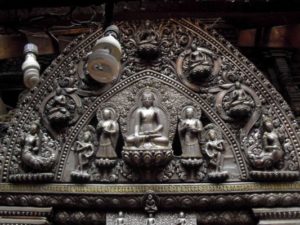 The sculpture has enjoyed a long and interesting history in Nepal and many carved artifacts have been found in the Terai region of the country. All early sculptures were religious in nature and the artists themselves also seemed to be extremely devoted to their various deities. While early sculptures were very simple, but those from the Lichchhavi period were strikingly beautiful. These sculptures were made from stone, copper, and bronze and depict round faces and slanted eyes. There is a lot of attention to detail while still presenting the deity in a simplistic way. The use of clothing and ornaments were always kept to a minimum and often the subject wears only a Dhoti or Sanghatis. The Lichchhavi period (5-8 CE) was the Golden Age of Nepalese sculpture and many excellently excavated and preserved examples can be found. Woodcarving, while not always in ornamental form, also served a decorative purpose in ancient Nepal and thus is viewed as an art form. Windows, doors, temples, roof-struts, and numerous artifacts were all carved by hand and can be still seen in the Katmandu valley. Wood is not as long-lasting as a stone and so Sculptures in Nepal examples do not date back further than the 14th century yet wood carving continues to be a very prominent aspect of Nepalese architecture. Nepalese artwork had far-reaching effects on other cultures. The first major introduction of local art to other cultures occurred in the 7th century AD when Mahayana Buddhism was introduced in Tibet under the order of king Angshuvarma. A large number of monasteries were subsequently built and these all needed to be filled with manuscripts and sculptures. Today some of the most outstanding examples of Nepalese art can be found in Tibet. Nepal’s artistic influence even cross the borders of China when Nepalese artisans were sent to the courts of Chinese emperors to impart their knowledge to local craftsmen and to create artworks. The most exemplary contribution of this nature was made by the innovator and architect Balbahu or ‘Arniko’, who’s many creations can still be found to this day.
The sculpture has enjoyed a long and interesting history in Nepal and many carved artifacts have been found in the Terai region of the country. All early sculptures were religious in nature and the artists themselves also seemed to be extremely devoted to their various deities. While early sculptures were very simple, but those from the Lichchhavi period were strikingly beautiful. These sculptures were made from stone, copper, and bronze and depict round faces and slanted eyes. There is a lot of attention to detail while still presenting the deity in a simplistic way. The use of clothing and ornaments were always kept to a minimum and often the subject wears only a Dhoti or Sanghatis. The Lichchhavi period (5-8 CE) was the Golden Age of Nepalese sculpture and many excellently excavated and preserved examples can be found. Woodcarving, while not always in ornamental form, also served a decorative purpose in ancient Nepal and thus is viewed as an art form. Windows, doors, temples, roof-struts, and numerous artifacts were all carved by hand and can be still seen in the Katmandu valley. Wood is not as long-lasting as a stone and so Sculptures in Nepal examples do not date back further than the 14th century yet wood carving continues to be a very prominent aspect of Nepalese architecture. Nepalese artwork had far-reaching effects on other cultures. The first major introduction of local art to other cultures occurred in the 7th century AD when Mahayana Buddhism was introduced in Tibet under the order of king Angshuvarma. A large number of monasteries were subsequently built and these all needed to be filled with manuscripts and sculptures. Today some of the most outstanding examples of Nepalese art can be found in Tibet. Nepal’s artistic influence even cross the borders of China when Nepalese artisans were sent to the courts of Chinese emperors to impart their knowledge to local craftsmen and to create artworks. The most exemplary contribution of this nature was made by the innovator and architect Balbahu or ‘Arniko’, who’s many creations can still be found to this day.
Stupa Style
 A Nepalese architectural style is borne out of Buddhist concepts and used in the construction of Buddhist shrines. Stupa architecture is easy to spot. A square base is mounted upon a hemispherical structure. Atop the strong base is thirteen rings layered on top of each other and progressively narrowing to a point. A parasol tops it all off. The square bases, also known as Harmika has pairs of “all-seeing” eyes painted on each of its exposed sides. Swayambhu Shrine and Baudhanath Shrines, declared World Heritage Sites by UNESCO, are exquisite examples of the stupa style. In Patan, you will discover some of the oldest stupas in Nepal that were commissioned by King Ashoka.
A Nepalese architectural style is borne out of Buddhist concepts and used in the construction of Buddhist shrines. Stupa architecture is easy to spot. A square base is mounted upon a hemispherical structure. Atop the strong base is thirteen rings layered on top of each other and progressively narrowing to a point. A parasol tops it all off. The square bases, also known as Harmika has pairs of “all-seeing” eyes painted on each of its exposed sides. Swayambhu Shrine and Baudhanath Shrines, declared World Heritage Sites by UNESCO, are exquisite examples of the stupa style. In Patan, you will discover some of the oldest stupas in Nepal that were commissioned by King Ashoka.
Shikhara Style
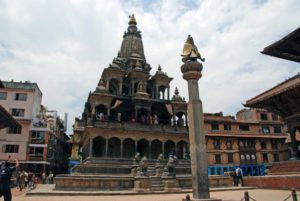 Nepal’s Shikhara style consists of 5 or nine vertical sections forming a high pyramidal or curvilinear tower-like structure. The apex is bell-shaped. This style is not very common, but a fine example can be seen in Patan, it is the Krishna temple.
Nepal’s Shikhara style consists of 5 or nine vertical sections forming a high pyramidal or curvilinear tower-like structure. The apex is bell-shaped. This style is not very common, but a fine example can be seen in Patan, it is the Krishna temple.
Architecture
The magnificent architecture of Nepal is a form of art that truly captures the culture and essence of Nepal. Traditional Nepalese architecture attracts both tourists and scholars to this amazing country. The fascinating historical buildings and unique Nepalese architectural designs inspire much awe. Particularly popular is Bhaktapur where tourists can explore numerous outstanding Nepalese architectural structures. Certain people have divided Nepal’s architecture into three non-specific stylistic groups, namely Pagoda style, stupa style, and shikhara style.
Pagoda Style
 This Nepalese architectural style features several layered roofs that have broad eaves carefully held up by carved wood struts. The building’s roof is typically crowned by triangular spires surrounding upside-down bell made out of burnished gold. Windows on Nepal Temple-Architecture the structure protrudes and is usually latticed. The pagoda style is a true demonstration of fine artistic architectural design. Interestingly, China later borrowed the style which further spread through Asia. Pay a visit to Kasthamandap in the Kathmandu Valley to view an impressive wooden pagoda constructed during the Malla age. Another spectacular example of this intriguing Nepalese architectural style is Basantpur Palace, a nine-story structure commissioned by King Prithvi Narayan Shah. Also make your way to the temples of Pashupati, Changu Narayan, and Taleju.
This Nepalese architectural style features several layered roofs that have broad eaves carefully held up by carved wood struts. The building’s roof is typically crowned by triangular spires surrounding upside-down bell made out of burnished gold. Windows on Nepal Temple-Architecture the structure protrudes and is usually latticed. The pagoda style is a true demonstration of fine artistic architectural design. Interestingly, China later borrowed the style which further spread through Asia. Pay a visit to Kasthamandap in the Kathmandu Valley to view an impressive wooden pagoda constructed during the Malla age. Another spectacular example of this intriguing Nepalese architectural style is Basantpur Palace, a nine-story structure commissioned by King Prithvi Narayan Shah. Also make your way to the temples of Pashupati, Changu Narayan, and Taleju.

